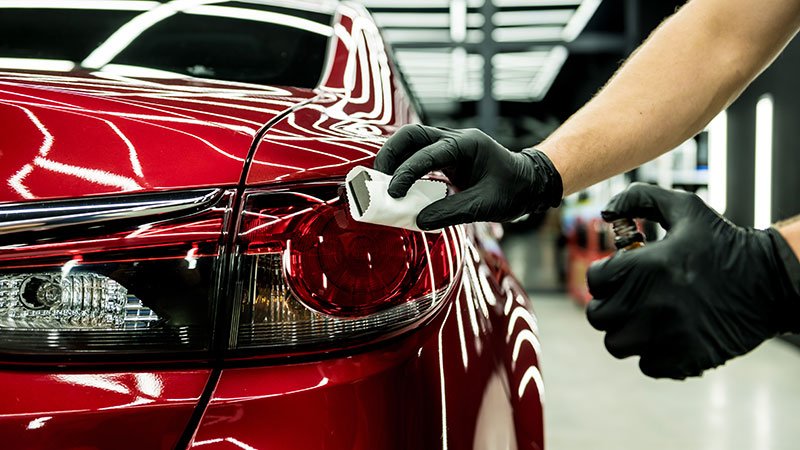A Comprehensive Guide to the Sorts Of Ceramic Layer on the Market
Ceramic coverings have arised as a crucial option throughout numerous sectors due to their unique residential properties and applications. From silica-based formulas known for their effectiveness to crossbreed choices that merge multiple advantages, the options readily available can be frustrating. Recognizing the nuances of each type, including their particular benefits and perfect use instances, is crucial for making notified decisions. As we check out the distinct attributes and applications of these coverings, the ramifications for efficiency and long life become progressively apparent, questioning concerning which kind may ideal match your demands.
Understanding Ceramic Coatings
Ceramic coverings are sophisticated protective services that have acquired popularity in different sectors, especially in vehicle and aerospace applications. These finishes include a fluid polymer that, when healed, creates a sturdy, hydrophobic layer on the surface area of the substrate. This layer gives improved resistance to environmental pollutants, UV radiation, and chemical exposure, thereby prolonging the life and visual allure of the underlying material.
The fundamental element of ceramic finishes is silica, which adds to their hardness and resilience. The application process usually involves surface preparation, application of the finish, and curing, which can be accomplished with warmth or UV light. When treated, ceramic finishings exhibit phenomenal bonding properties, permitting them to stick strongly to a selection of surfaces, consisting of metals, plastics, and glass.
In enhancement to their protective functions, ceramic layers also offer simplicity of maintenance. Their hydrophobic nature decreases the adherence of dust and crud, making cleaning easier and much less constant. In general, the adoption of ceramic finishings stands for a significant development in surface area protection modern technology, supplying both useful and aesthetic advantages throughout several fields.
Sorts Of Ceramic Coatings
Different kinds of ceramic layers are offered, each designed to satisfy specific efficiency demands and applications - ceramic coating sarasota. One of the most typical kinds include:
Silica-based Coatings: These coverings mainly consist of silicon dioxide and are understood for their toughness and chemical resistance. They are widely made use of in vehicle and industrial applications.
Titanium Dioxide Coatings: Distinguished for their photocatalytic residential or commercial properties, titanium dioxide coverings are commonly used in settings where self-cleaning and antifungal residential properties are preferable, such as in building materials and auto finishes.
Zirconia Coatings: Defined by their high-temperature stability and thermal resistance, zirconia coatings are made use of in applications such as generator engines and high-performance vehicle parts.
Alumina Coatings: Exhibiting superb hardness and thermal stability, alumina finishes are regularly used in wear-resistant applications, consisting of reducing devices and commercial equipment. - Auto Detailing
Hybrid Coatings: Combining the homes of various materials, crossbreed coatings provide enhanced performance features, making them ideal for special and additional info requiring applications.
Each sort of ceramic layer serves unique objectives, enabling customers to pick the most suitable service based upon specific ecological conditions and efficiency demands.
Benefits of Ceramic Coatings
Ceramic finishes, in certain, deal various benefits that make them increasingly preferred amongst suppliers and customers alike. These finishes are immune to scratches, chemicals, and UV rays, making certain that the underlying surface area remains safeguarded over time.
In addition to longevity, ceramic coverings offer superb hydrophobic properties, permitting easy cleaning and maintenance. This water-repellent nature reduces the adherence of dirt, grime, and other contaminants, which can prolong the aesthetic allure and functionality of the surface. In addition, ceramic coverings can substantially boost thermal resistance, making them perfect for applications that sustain heats.

Application Process
When using ceramic coverings, a precise strategy is important to accomplish ideal results. A tidy surface ensures correct bond of the finishing.
When the surface is prepped, the following step is to apply the ceramic finishing. This can be done utilizing an applicator pad or a microfiber cloth, ensuring also coverage. It is critical to work in small areas to keep control and protect against early curing. The finish needs to be applied in thin layers, as thicker applications can cause irregular coatings.
After application, the helpful hints finishing needs a certain healing time, usually varying from a few hours to try this out a full day, depending on the item. Complying with these steps diligently will make best use of the efficiency and durability of the ceramic covering, providing a sturdy protective layer for the surface.
Upkeep and Longevity
To make sure the longevity and performance of a ceramic layer, regular upkeep is necessary. Ceramic finishes, known for their resilience and safety high qualities, require details care routines to optimize their life-span and performance. The very first step in upkeep includes routine washing with pH-neutral soap, avoiding rough chemicals that can deteriorate the covering. It is suggested to clean the car consistently, preferably every two weeks, to avoid the build-up of contaminants that can jeopardize the covering's honesty.
Along with normal cleaning, routine evaluations are essential. Try to find indicators of wear or damage, such as hydrophobic buildings diminishing or surface flaws. If needed, a light gloss might be put on rejuvenate the covering without stripping it away.
In addition, the application of a booster spray can enhance the covering's hydrophobic results and recover its gloss. This is particularly advantageous for layers that have actually remained in usage for a prolonged duration. Eventually, by adhering to these maintenance practices, one can considerably prolong the life of a ceramic finishing, making sure that it remains to supply ideal security versus environmental aspects and preserve the visual allure of the vehicle.
Conclusion
